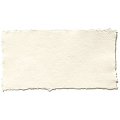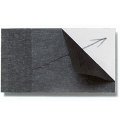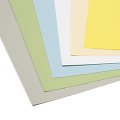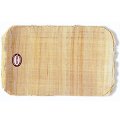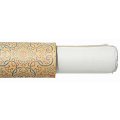Tyvek
Information about Tyvek
Tyvek is a spun fleece made totally from polyethylene fibres (HDPE = high density PE). The unstraightened fibres are spun and, under the influence of heat, pressed together whereby a remarkably tough and extremely tear-proof material is generated, one that is considerably lighter than conventional materials with similar thicknesses. Soft Tyvek has the characteristic of a textile; this stiff material is comparable to Japanese paper as far as appearance and consistency is concerned. Tyvek can be folded and unfolded practically forever and is extremely tear-proof. In contrast to paper, it is very weather-resistant and suitable for outdoor use. It can be used in temperatures between -74 °C and + 79 °C, can be successfully washed in a washing machine (will shrink a bit the first time) and is resistant to numerous chemicals. Because it is a PE product it recycles extremely well under the condition that it is collected like with like, i.e. with other PE and PP products.
Applications: Tyvek can be printed with all the classic methods and is therefore great when the planned use for your print requires a material similar to paper but one that is hard-wearing and resistant to moisture: marine charts, maps of all kinds, assembly and operating instructions, identification cards, handbooks, starting numbers, labels and pendants, envelopes or packaging sheathes, templates, etc., etc., etc. Please note: photocopiers and (hot) laser printers should not be used on Tyvek because it will shrink at 118 °C and will begin to melt at 135 °C.
Tyvek can also be used as an inexpensive slide-show screen, for making room dividers or as kite paper. When used for packing purposes, this soft spun fleece material can serve to protect your sensitive objects even under extreme weather conditions. It can be also be used to make clothing (e.g. disposable protection suits). White overalls made from the subtly crinkling and finely structured Tyvek were especially conspicuous in the 1980´s while nowadays newspaper salesmen can be seen with printed jackets made from this material.
Treatment: Tyvek can be cut with a SHEARS or BLADE and can be stamped, perforated, stapled, clamped and, not least, sewn. It can be laminated with self-adhesive films as well as other materials. CYANOACRYLATE GLUE is the right stuff for punctiform gluing while in the case of flat bonding good results can be obtained with contact glues like PATTEX, dispersion glues like PONAL as well as with spray glues. Printing can be done using all the customary methods: letter press printing, surface printing, off-set printing, flexographic printing, gravure printing or screen printing. We recommend that printing dyes that contain very little solvent be used. In this regard, it is noteworthy that the corona treatment (increased surface adhesion) for Tyvek, in contrast to other PE materials, lasts for over one year.
